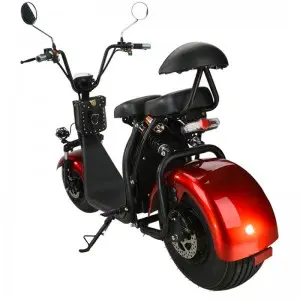Electric scooters are becoming more and more popular as a convenient and environmentally friendly mode of urban transportation. As more and more people turn to e-scooters as a mode of transportation, questions arise about their energy consumption and environmental impact. A common question that often comes up is “Do electric scooters use a lot of electricity?” Let’s delve deeper into this topic and explore the energy consumption of electric scooters.
Electric scooters are powered by rechargeable batteries, usually lithium-ion or lead-acid batteries. These batteries store the energy needed to propel the scooter and are recharged by plugging it into an electrical outlet. The power consumption of an electric scooter depends on several factors, including battery capacity, travel distance and charging efficiency.
In terms of energy consumption, e-scooters are relatively efficient compared to other modes of transportation. Electric scooters require significantly less energy to charge than cars or even motorcycles. In addition, electric scooters also have the advantage of regenerative braking, which can recover part of the energy consumed during braking and use it to charge the battery. This feature further improves the overall energy efficiency of the electric scooter.
The actual power usage of an electric scooter varies depending on the specific model and how it is used. On average, a typical electric scooter consumes about 1-2 kWh (kilowatt hours) of electricity per 100 miles traveled. To put this into perspective, the average electricity bill in the United States is about 13 cents per kilowatt-hour, so the energy costs of running an electric scooter are relatively low.
It’s worth noting that e-scooters have an environmental impact beyond just their energy consumption. Electric scooters have zero tailpipe emissions compared to gasoline-powered vehicles, which helps reduce air pollution and greenhouse gas emissions. This makes them a cleaner and more sustainable option for urban transportation.
In addition to energy efficiency and environmental benefits, electric scooters also offer economic advantages. They are generally cheaper to operate and maintain than traditional gasoline-powered vehicles. Due to lower fuel and maintenance costs, electric scooters can save users significant money over time.
Furthermore, the growing popularity of e-scooters has led to the development of infrastructure to support their use. Many cities are implementing e-scooter sharing programs and installing charging stations to meet the growing demand for this mode of transportation. This infrastructure expansion makes e-scooters more accessible and convenient for users, thus contributing to the overall sustainability of e-scooters.
Like any electric vehicle, the environmental impact of an electric scooter is affected by the source of charging. The overall environmental footprint of an e-scooter will be further reduced if the electricity comes from renewable sources such as solar or wind power. This highlights the importance of switching to clean and renewable energy to power electric vehicles, including scooters.
To sum up, electric scooters are a relatively energy-saving and environmentally friendly means of transportation. While they do consume electricity when charging, their energy consumption is low compared to other vehicles. The environmental benefits of e-scooters, including zero emissions and lower operating costs, make them a compelling option for urban transportation. As technology continues to advance and e-scooter infrastructure expands, their role in sustainable transportation is likely to increase, helping to create cleaner, greener urban environments.
Post time: May-24-2024


